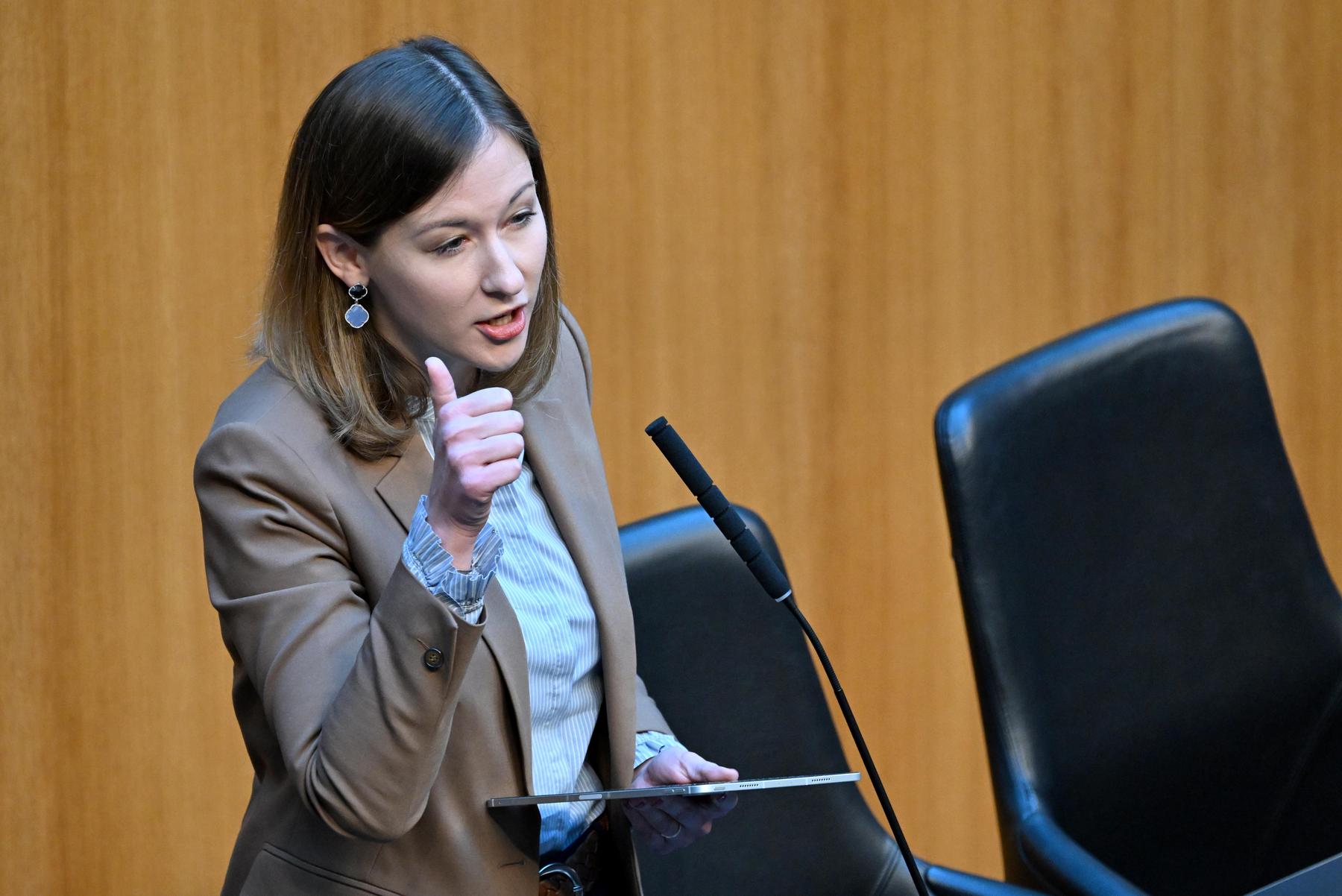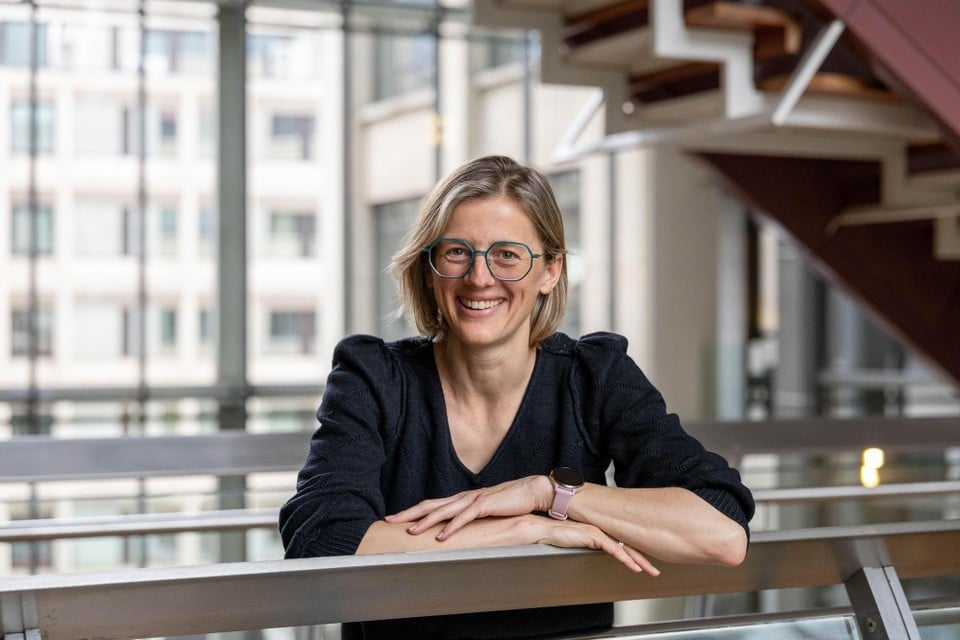In Avignon, curtain raising from the creative villa – Liberation

In Avignon, The creative villa proposes to confront scientific, educational and artistic knowledge to create new knowledge. An event that Release is a partner.
The place here preceded the function. After three years of work, The creative villa opens its doors. It all started with a wasteland In the heart of Avignon, a vast and beautiful 19th century building, surrounded by a 3,000 m² garden. He first welcomed a normal school of teachers, then the Faculty of Sciences, before being deemed obsolete in 2014 – unsuitable for university laboratories, now installed in brand new premises on the outskirts of Avignon, on the Agrosciences campus. What to do with these pregnant terrains of old stones? The historic site, out of sight behind high walls, does not stay long without object. In 2015, joint funding of the State and local communities (via a state-region plan contract) was engaged to allow its depollution and rehabilitation. Fifteen million euros are put on the table, supplemented by public and private funding.
A first Avignon University extension project is quickly abandoned in favor of an approach « Innovative », say his defenders. These are there « University outside the university », Summarizes Anne-Lise Rosier, at the project’s helm as director of the creative villa. In short, the ambition is to create a dedicated interdisciplinary space, of course to teacher-researchers, but also to artists, cultural actors and creative industries. A « Place totem » Open to civil society which also aims at the hybridization of audiences, with free punctual events (exhibitions, conferences, shows, etc.). A whole program! At the villa, the brand new auditorium with 80 places, the four freshly delivered artistic trays, the audio and video mounting studio, the 800 m² of office and training spaces dedicated to businesses – without forgetting the brewery and the vast garden – seem to act this promise of exchange and mix of uses.
But once the building is rehabilitated, it is still necessary to be able to assume its operating expenses. In these times of fierce budget cuts for universities – in April, The government suppressed by decree 400 million euros in the research budget in France, and the 2025 finance law was already amputating the resources of the sector by one billion euros-, the creative villa is based on a public-private financing model called University and research company (on) and developed within the framework of the National Program of Investments for the Future 3. The objective: to strengthen the autonomy of higher education and research establishments that experiment with new ways to value their heritage. Harvard’s fortune, Oxford and other Cambridge, real real estate empires, would have the general secretariat for investment?
On the French side, the idea of trying to make stone grow via a private company hardly seems to seduce academics. Launched in 2018 and accompanied by 400 million euros, the national call aimed at creating on on received only fifteen files. Only two of which are selected, and only one concerning university real estate: the Avignon creative villa. Perhaps because, as Julien Gossa, teacher-researcher at the University of Strasbourg /CNRS, specialist in public policies in teaching and research, is not undergoing university skills: « We get out of our core business. » No doubt also because public-private partnerships ask many questions, especially in the research and education sector where independence is a cardinal value.
Their limits were also pointed out by a senatorial report a decade ago and then by the European Court of Auditors. « They systematically translate into enormous asymmetry », judge Julien Gossa. On the one hand, because when the private sector does not earn money, « He will remove his balls, while the public is bound feet and fists. » On the other hand, because the accountants and university lawyers know less well for commercial disputes, « We therefore systematically get caught up in people whose job is to look for benefits. »
At the creative villa, we reassure. The legal and financial assembly of the Avignonnaise has been built tailor -made. « It is the private sector that comes to the aid of the public and not the reverse. » The team A « Reinforced the safeguards » Scheduled in the initial program, specifies Anne-Lise Rosier. Thus, the public remains in the majority within the private company (48 % owned by Avignon University, at 17 % by the Territorial Bank, the State, and 35 % by EIC, a solidarity company of social utility), which only manages the building. Programming and projects are funded, moreover, by subsidies, patronage or endowments that the team of the creative villa must go to the blow by blow.
Concretely, SUR SUR PERCOIVES RENTS via the rental of spaces, which make it possible to self -finance part of the operating costs of the site. « Without this model, we could not have had the means to exploit this building, we should have returned it to the State », continues Anne-Lise Rosier. The small University of Avignon (6,400 students in 2023) is no exception. In its October 2022 report on academic real estate, the Court of Auditors confirms it, judging « Failland » Funding for heritage all over France: establishments simply no longer have the means to fulfill their maintenance obligations.
Would the university have any other choice today than to turn to the private sector to finance its walls, and to deploy its activities? For Serge de Same, vice-president strategy and development of Nantes University, the classic financing model has come to an end, « Unless tomorrow the state takes it upon its charge, which would surprise me very much », he slips. Today, the deficit is structural, but universities can neither make their heritage and borrow directly … « It becomes complicated. The public-private link can arouse questions, but it has interesting ways to explore ”, judge Serge of the past.
There remains the risk of the degradation of public service missions, and the loss of independence. For Julien Gossa, the model experienced at the creative villa nevertheless seems much less dangerous than a poorly supervised privatization. Because to deal with situations of budgetary asphyxiation, it is not uncommon for establishments to sign agreements with private partners, such as totalnergies, without mastering the influence of the latter on courses and pedagogy. « Even if there is an interface with an external power, as much as it is identified, circumscribed in a specific place, where national diplomas are not done. » This transparency is undoubtedly one of the advantages of the Villa Avignon. What to convince other establishments? If he judges the experimentation « Inspiring », Serge of the past remains cautious: « I’m not saying it will be done in Nantes next year, but we’re going to look at how it changes. »
For its part, the creative villa team is advancing. It welcomes several players in the territory within its walls: the National Conservatory of Arts and Crafts of the PACA region, dedicated to vocational training; The School of New Images which forms 250 students each year in the 2D /3D animation cinema professions and video games; The French Tech Grande Provence which supports start-ups and other innovative companies in the territory, or the Frames Web Video Festival, which explores new forms of narration and digital issues and which organizes its meetings within the villa.
And to complete the scientific, artistic and pedagogical programming, two waves of appeal for expressions of interest should be launched each year. Fifty projects have already been selected for the coming months by expert colleges, mixing teacher-researchers, personalities from the world of education, artists and cultural creators as well as residents of the creative villa.
Among the highlights expected, the exhibition of photographer Edward Burtynsky designed by the Canadian Cultural Center, « the hollow earth: from the human scale on a global scale ». « A major project », Salues Anne-Lise Rosier. Another flagship meeting, the tutoring of Avignon Festival « Impossible transmission » carried by the choreographer Mathilde Monnier, who supervises for three weeks the work of around thirty emerging, French and international artists. Their performance will be open to the public and professionals. Eve Lombart, administrator of the Avignon Festival, notes the importance of a « Physical space allowing regular exchanges, meetings, bridges » Between different disciplines and sectors but whose projects can converge. “In previous years, partnerships existed, but they only took shape at the time of the festival, of the event. With the creative villa, there is a consistency between the background and the form. ” In the eyes of the administrator, working with the new structure also has a precious educational support. Example with the diploma « Culture and handicap (s): 360 ° accessibility », which extends the reflections of the festival team on a more inclusive live performance.
And tomorrow? The model must inspire that of the Villa Naturality – Avignon University, dedicated to health, the environment, and the agronomists. Its opening is scheduled in 2028. What to consolidate Anne-Lise Rosier: « The future is, I think, in this public-private hybridization, but with guarantees so that the public remains in the majority, and that the public service is in the programming management. »







